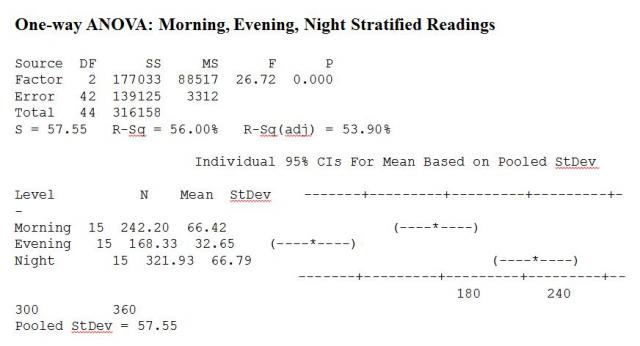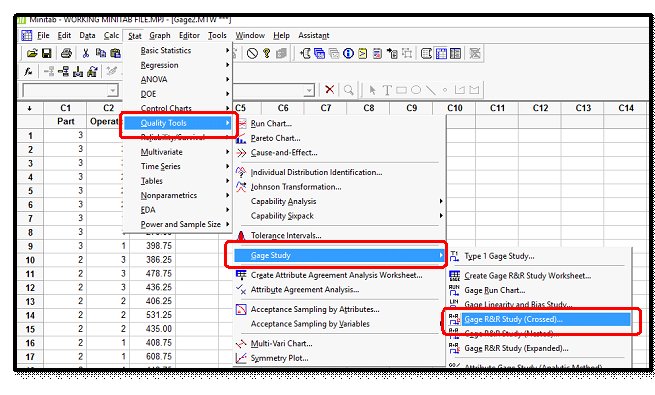

Statisticians refer to this as random error. Why? The within-group variance represents the variance that the model does not explain. To conclude that the group means are not equal, you want low within-group variance. The F-statistic denominator, or the within-group variance, is higher for the right panel because the data points tend to be further from the group average. The distributions represent how tightly the data points within each group cluster around the group mean. The graph compares low within-group variability to high within-group variability. As the data points within each group spread out further from their group mean, the within-group variance increases. This variance is small when the data points within each group are closer to their group mean. Again, it is the sum of the squared distances divided by the error DF. This variance measures the distance between each data point and its group mean. Now we move on to the denominator of the F-test, which factors in the variances within each group.


F-test Denominator: Within-Groups Variance The relevant point is that this number increases as the group means spread further apart. The meaning of this number is not intuitive because it is the sum of the squared distances from the global mean divided by the factor DF. Looking back at the one-way ANOVA output, which statistic do we use for the between-group variance? The value we use is the adjusted mean square for Factor (Adj MS 15.540). The between-group variance increases as the dots spread out. This graph represents each group mean with a dot. The dot plot illustrates how this works by comparing two sets of group means. Otherwise, the variances are not comparable, and the ratio for the F-statistic is meaningless. By incorporating the DF, mean squares account for the differing numbers of measurements for each estimate of the variance. The result is that the sum becomes larger and larger as you add in more observations. If you have a bigger sample, there are more squared deviations to add up. Variances are the sum of the squared deviations from the mean. F-values are the test statistic for F-tests. Mean squares are simply variances that account for the degrees of freedom (DF) used to estimate the variance. While variances are hard to interpret directly, some statistical tests use them in their equations.Īn F-value is the ratio of two variances, or technically, two mean squares. If you take the square root of the variance, you obtain the standard deviation, which is easier to interpret because it uses the data units. It’s difficult to interpret variances directly because they are in squared units of the data.


 0 kommentar(er)
0 kommentar(er)
